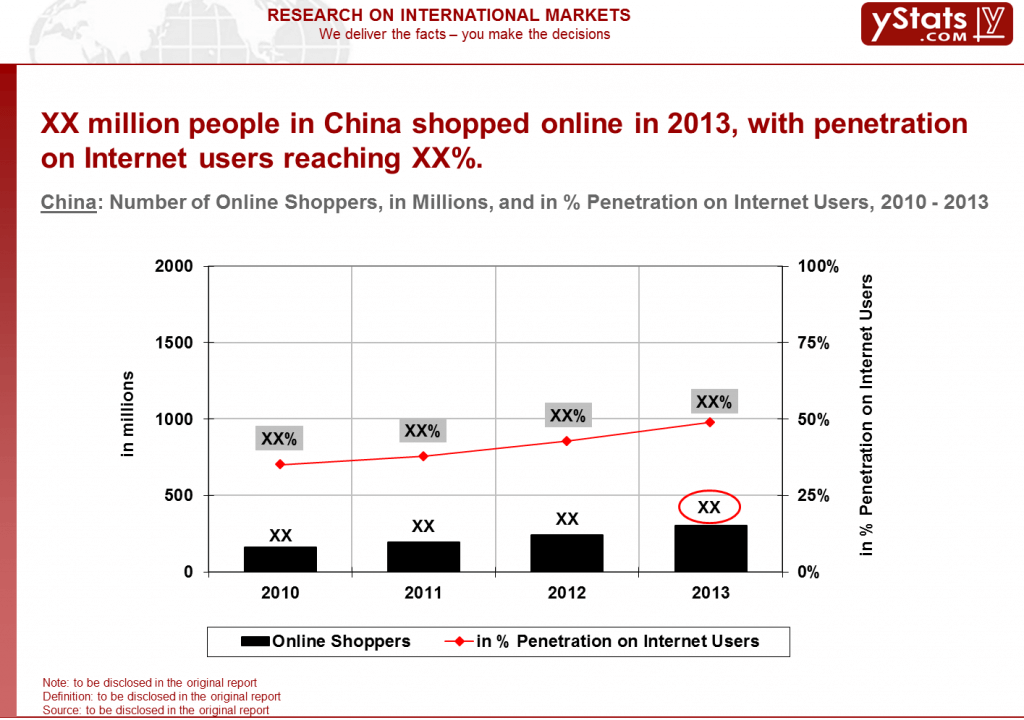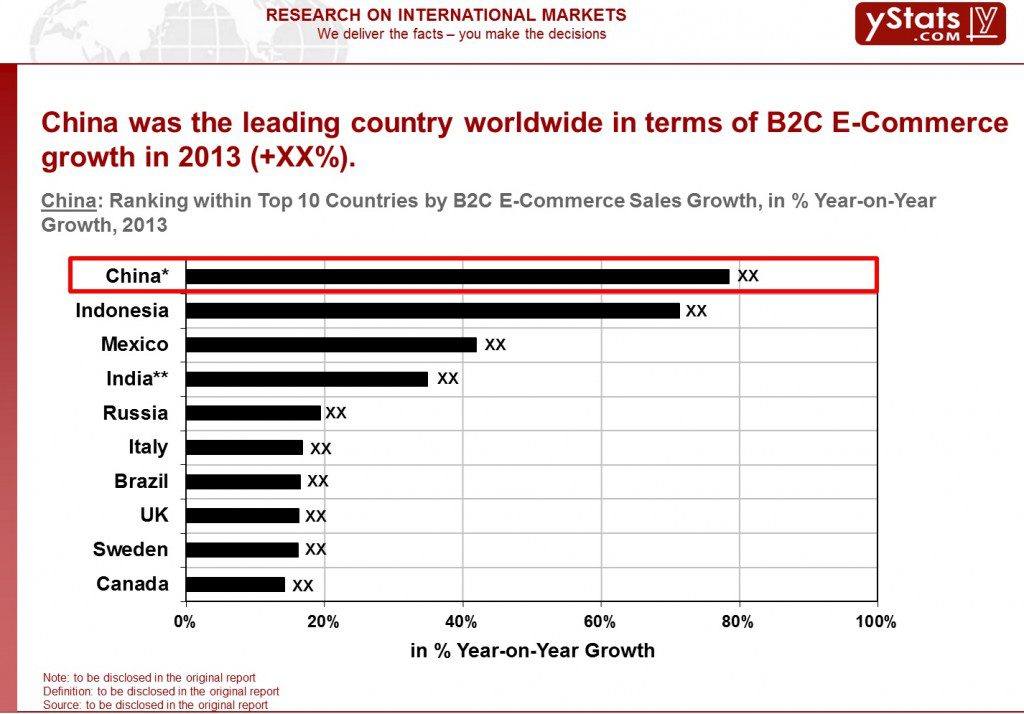A new publication from Hamburg-based secondary research organization yStats.com, “China B2C E-Commerce Market 2014“, reports that China is ranked as the world’s top market in B2C E-Commerce potential. The world’s most populous country, it is already the second largest B2C E-Commerce market worldwide and the fastest growing. China’s potential for further growth of online retail comes from the growing Internet and online shopper penetration, as well as increasing consumption per shopper.
Over 300 million people, about half of internet subscribers in China, shopped online in 2013. By 2017, there are expected to be over 500 million online shoppers in China. The distinguishing characteristics of Chinese shoppers include mobile affiliation, popularity of price comparison websites and the use of social networks and product reviews. Surveys reflect that the most important factors in making a purchase decision are price and popularity or reputation of the brand and its website.
The C2C sector in E-Commerce in China is still larger than that of B2C, though the situation is gradually changing. In 2013, B2C E-Commerce sales in China grew by over +60% year-on-year to a high double-digit number in EUR billion. In 2014, sales are forecasted to top EUR 100 billion with continued rapid growth expected for several years. While online shopping is growing, regulators in China are working on a new comprehensive E-Commerce law. One of the latest regulatio
ns introduced was a 7-day free return policy.
Consumers in China are among the world’s most active mobile shoppers. In 2013, over 100 million people shopped via mobile Internet, more than double the 2012’s level and still reaching only slightly above a quarter of total mobile Internet users. In China, the M-Commerce market is dominated by mobile shopping apps, but an emerging segment is M-Commerce via messaging apps.
Along with the use of mobile devices, other trends in online shopping in China include the increasing use of social media, group-buying and purchase of luxury goods. Chinese shoppers also are actively buying outside the country, with their purchases accounting for the largest part of the multi-billion EUR cross-border B2C E-Commerce value. Overall, the two largest product categories in online shopping are clothing and electronics, while among fast growing are groceries, baby products and cosmetics.
The B2C E-Commerce market in China is dominated by online marketplaces, while the direct-to-consumer segment is significantly smaller. Alibaba’s B2C marketplace Tmall was the largest player in 2013, controlling almost half of the market, followed by JD.com and Tencent. Foreign merchants employ various strategies to penetrate the booming market, including launching shops on popular online marketplaces, the strategy chosen by brands such as Gap, Esprit, Uniqlo, and Levi’s, while Walmart has chosen to acquire an existing online store and Amazon launched its own online shop through new investment. Puma and Apple are examples of merchants that are trying a dual approach, offering one product range through a Chinese market place and a different range through their own online shops.
China’s largest E-Commerce company, Alibaba, filed for an IPO in the USA in May 2014, while the largest of independent B2C E-Commerce companies, JD.com, completed an IPO that month. The investment deals in Chinese E-Commerce in 2010 – Q1 2014 involved sectors such as children‘s goods, electronics, and clothing, as well as in logistics and payment systems. A major deal in March 2014 was JD.com cooperating with the Internet services provider and E-Commerce merchant Tencent to rival Alibaba’s dominant market share.




